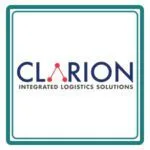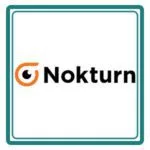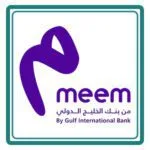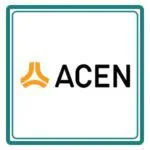ISO 14001 Environmental Aspect & Impact Register for a Company in Oman – A Case Study

Introduction
- In today’s regulatory and environmentally conscious landscape, companies in the oilfield services and construction sectors are increasingly required to monitor and manage their environmental impacts. A company based in Oman partnered with PopularCert to develop a comprehensive Environmental Aspect & Impact Register, aligned with ISO 14001 standards.
- This case study highlights the methodology used, risk factors considered, and the impact of the engagement.
Client Overview
The client operates across Oman in sectors including oilfield support, heavy machinery, infrastructure, and energy services. With expanding operations and high environmental sensitivity in desert and offshore locations, the client sought to strengthen its Environmental Management System (EMS) as part of its ISO 14001 compliance roadmap.
Objective
- Identify all environmental aspects across operational activities
- Assess their environmental impacts based on likelihood and consequence
- Classify environmental risks using a defined rating methodology
- Suggest control measures for minimizing significant environmental risks
- Support the EMS documentation required for ISO 14001 certification
Our Approach
PopularCert developed a structured Environmental Aspect & Impact Register, fully customized to reflect the company’s operations, risks, and industry standards.
Step 1: Activity & Process Mapping
- Reviewed core operational areas: mobilization, drilling, waste handling, chemical storage, transportation, and site services
- Mapped each activity to its corresponding environmental interaction (e.g., emissions, discharge, contamination, etc.)
Step 2: Risk Identification & Classification
- Identified key environmental aspects: oil spills, ground water contamination, air emissions, noise pollution, and chemical exposure
- Defined related impacts on soil, water bodies, flora, fauna, and human health
Step 3: Risk Rating System
- Applied a probability × consequence risk matrix to each identified hazard
- Classified risks as Acceptable, Medium, or High, based on severity
Step 4: Control & Mitigation Measures
Recommended best practices such as:
- Use of biodegradable materials and liners
- Spill kits and containment barriers
- Structured waste segregation and disposal
- Safety signage, PPE, and engineering controls
- Compliance with PDO environmental specifications
Step 5: Integration with EMS
- The register was formatted for easy inclusion into the company’s Environmental Management System
- Linked with related policies, procedures, and legal requirements
Types Of Certification
- ISO Certification
- ISO 9001 Certification
- ISO 14001 Certification
- ISO 45001 Certification
- ISO 22000 Certification
- ISO 27001 Certification
- ISO 17025 Certification
- ISO 13485 Certification
- ISO 20000-1 Certification
- ISO 22301 Certification
- ISO 50001 Certification
- ISO 37001 Certification
- IATF 16949 Certification
- ISO 29001 Certification
- ISO 31000 Certification
- ISO 20121 Certification
- ISO 10002 Certification
- ISO 41001 Certification
Get Free Consultation
Our Clients


















Examples of Aspects Covered
Activity | Aspect | Impact | Risk Rating | Control Measures |
Oil spill cleanup | Soil contamination | Environmental degradation | Medium | Double-lining flooring, controlled disposal |
Refueling | Groundwater pollution | Contamination of aquifers | Medium | Spill kits, containment trays, MSDS-based response |
Combustion engine use | Air emissions | Ecosystem disturbance | Acceptable | Engine efficiency improvements, maintenance logs |
Hazardous waste treatment | Leaching of chemicals | Soil and water impact | Medium | Secure storage, vendor compliance, awareness training |
Outcomes
By the end of the engagement, the client had:
- A complete ISO 14001-compliant environmental register
- Clear visibility of high-risk environmental interactions
- Defined mitigation and recovery procedures for each activity
- A solid foundation to support certification and internal audits
- Reinforced commitment to sustainability and regulatory compliance
Conclusion
PopularCert’s delivery of the Environmental Aspect & Impact Register provided the client with a valuable compliance tool for ISO 14001 and beyond. This register not only supports certification readiness but also drives long-term environmental responsibility in high-risk industries.
GET A FREE CONSULTATION NOW
FAQ
What is an Environmental Aspect & Impact Register?
It’s a key document required by ISO 14001 that identifies how a company’s activities interact with the environment. It evaluates the environmental risks (impacts) of each aspect, such as emissions, spills, or waste generation, and recommends mitigation measures.
Is the register mandatory for ISO 14001 certification?
Yes. ISO 14001 requires organizations to identify environmental aspects and evaluate their significant impacts. The register forms the basis for setting objectives, controls, and continual improvement efforts.
How often should the aspect and impact register be updated?
It should be reviewed at least annually or whenever there is a change in operations, legislation, or environmental conditions. For dynamic industries, more frequent updates may be necessary.
What’s the benefit of having a professionally prepared register?
A well-prepared register helps avoid non-conformities during certification audits, improves compliance with legal requirements, and supports decision-making on sustainability initiatives. It also raises awareness across teams and promotes environmental responsibility.
